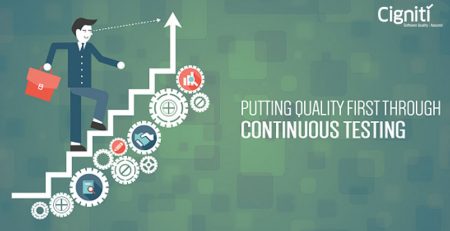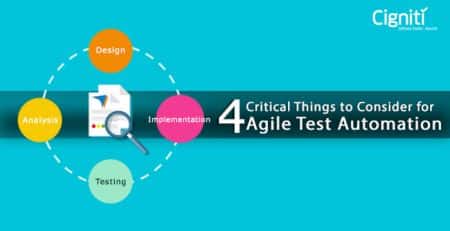The Role of Testing in Continuous Delivery
|
Listen on the go!
|
Today’s business landscape can be summarized in two words: rapid change. Sales teams need deployment of product on the same day. You don’t deploy – you lose market share. Slow development processes become outdated quickly as the market becomes more and more Agile-centric, more demanding. The need (and the solution for the problem) is to have automated solutions rather than the slow, unreliable manual processes. Continuous deployment that leads to continuous delivery requires automation of testing processes. There in lies the crucial need for continuous testing.
The age of Agile
Today’s continuous delivery requirements make functioning in an Agile development a necessity. In a continuous delivery mode, test and development teams collaborate efficiently and cut down manual methods while streamlining the process with automation, thereby ensuring frequent, timely releases. But to gain the most from your continuous delivery mode, you need to make a serious investment in continuous testing.
Why should we invest in Continuous Testing?
Without investing in continuous testing, a continuous delivery model will just remain an unfulfilled requirement. Continuous testing is basically the practice of test-first – your code snippet, the whole deployment package, a particular scenario – whatever that you need to provide. Continuous testing helps you save in terms of production costs as it’s a known fact that a bug caught during the production phase might prove to be ten times costlier than the one caught during the (continuous) testing phase itself. That sure means a lot of savings!
A deeper look at how Continuous Testing strengthens Continuous Delivery
Let’s go through how the right implementation of continuous testing in continuous delivery can benefit your delivery pipeline.
- Developers can perform a live-test of the implementation, functionality, and behavior of their code with tools such as Selenium. Regression testing, along with API, UI, and Performance testing, must be executed to ensure app quality in a number of customized cases.
- Using continuous integration, you can test all the changes made automatically on the go. After making the necessary configurations to the CI environment, the DevOps team can implement parallel tests with automatic notifications (SMSs), alerting them whenever there’s a failure in any build component.
- The QA team then must give their stamp of validation by running regression, load, and functional tests deployment. If the test module configuration is correct, then the tests can go on continuously without the need for any manual testing, at least until the alert system informs testers of a build failure.
Best Practices
Here’s some insight into the best practices for continuous testing in continuous delivery:
- Instead of grand-scale test runs, load tests implemented every day at specific target areas can reveal smaller bugs. Using continuous testing, you can test operating systems and devices before production, thus saving money in the long run.
- Conducting tests during development yields more precise results rather than in a controlled lab environment.
- An entire test suite can be divided into a number of smaller tasks to be run in parallel, which makes debugging much easier.
- The proper use of metrics provides invaluable knowledge on discrepancies in app architecture and issues in test automation. If metrics are ignored, the risk of failures and their impact multiplies multifold, which is never be a good situation.
Conclusion
To sum up in short, for continuous deployments and continuous delivery to be successful, a proper environment for continuous testing must be set up.
Cigniti Technologies has been at the forefront in providing Agile Testing Services for continuous delivery. Get in touch with Cigniti’s Agile Test Specialists who can guide you well on Agile Test Automation and help you realize the potential of an agile environment. Contact us today to know more about our wide range of testing services.





Leave a Reply